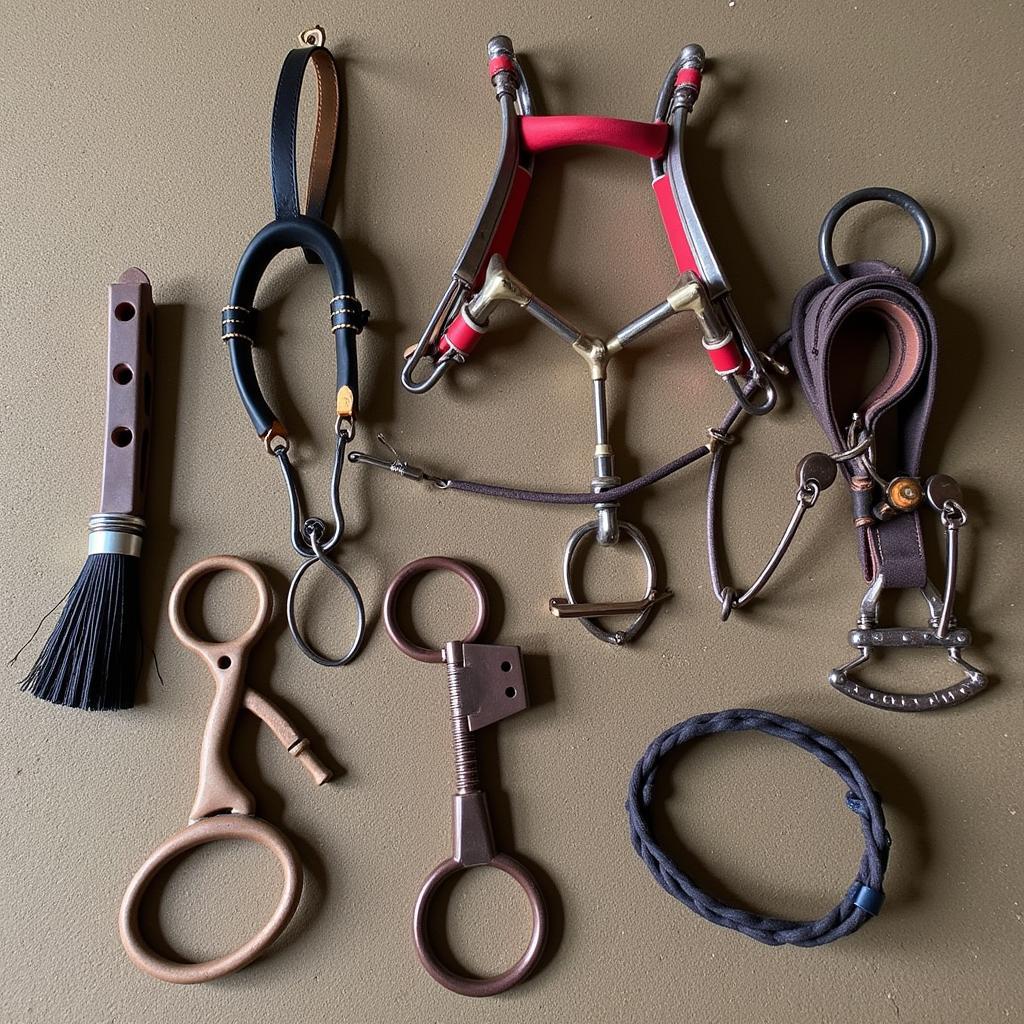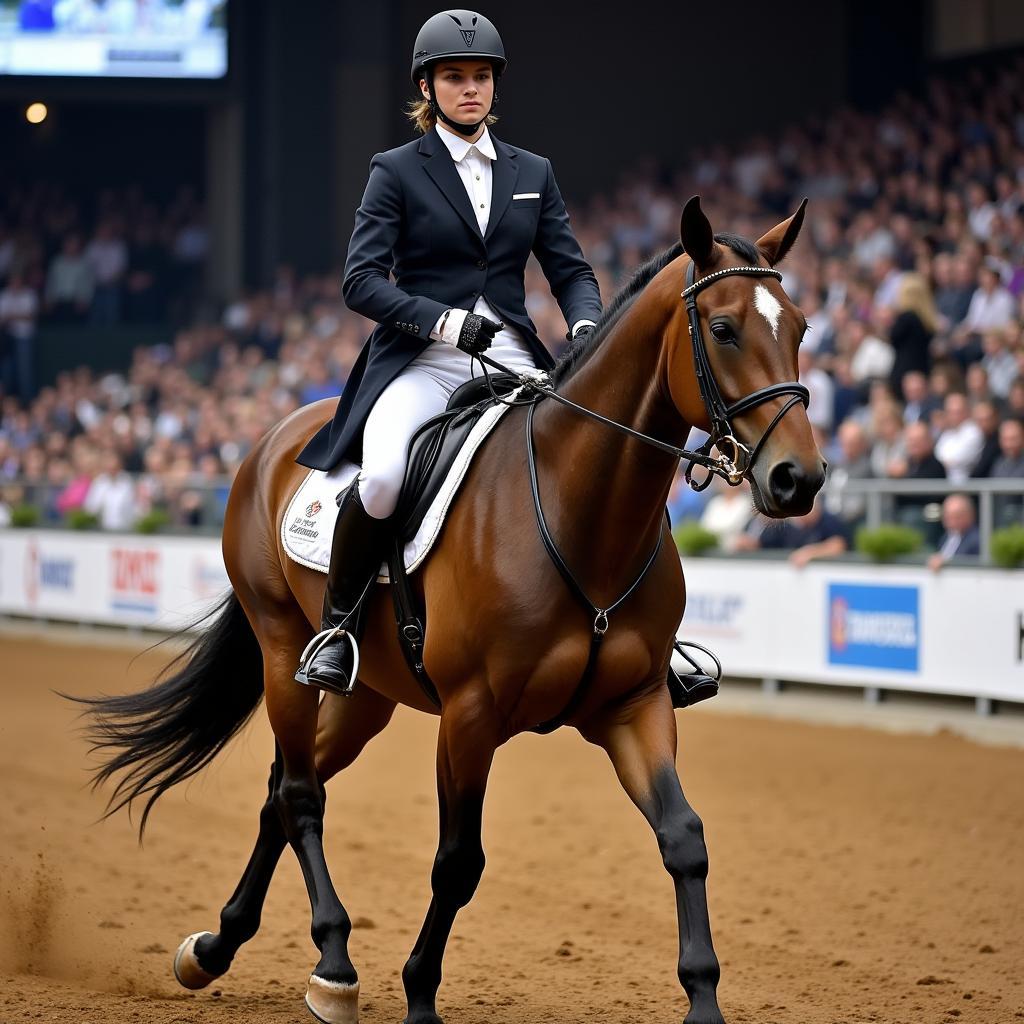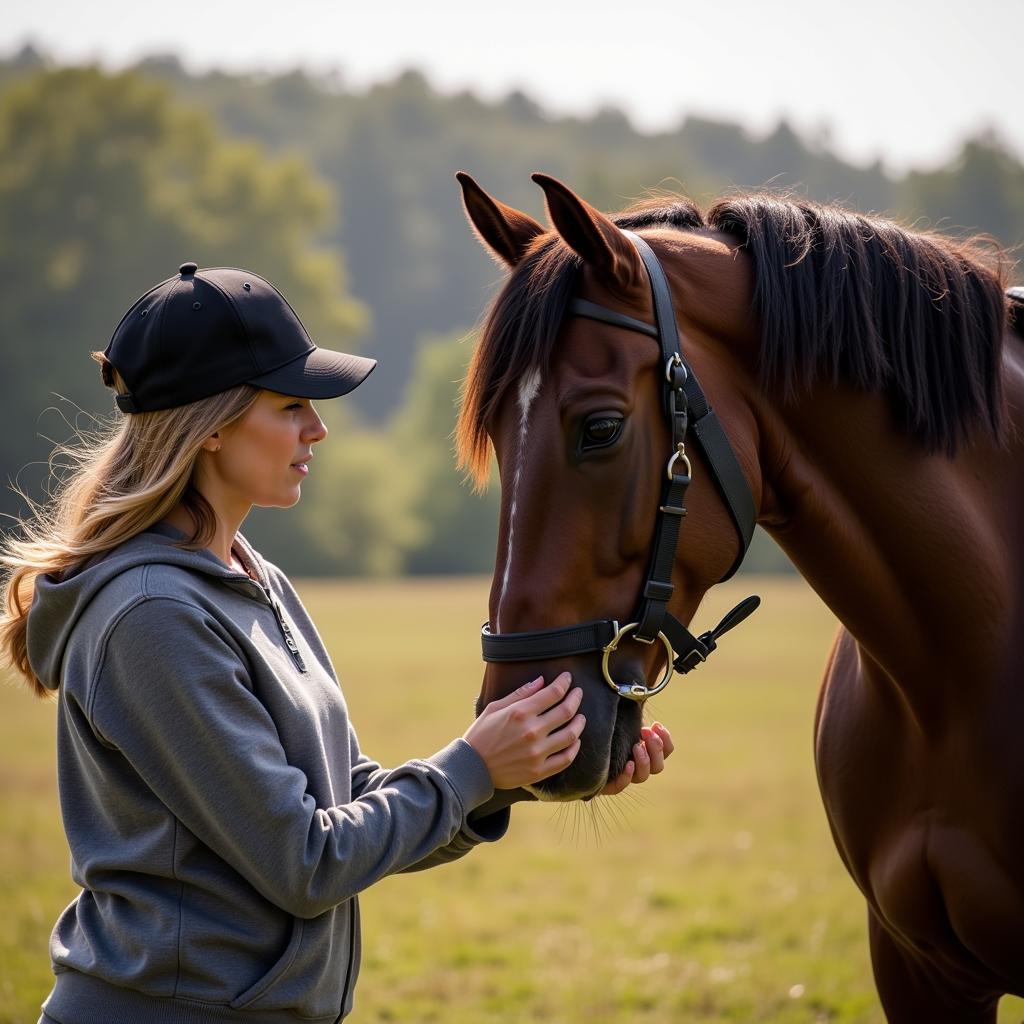The term “Horse Head Setter” might sound unfamiliar to some horse enthusiasts. It refers to a specific tool and the techniques used to achieve a desired head carriage in horses, primarily for show purposes. While the phrase itself might seem straightforward, the practice and its implications are nuanced and require a deeper understanding.
 Horse Head Setter Equipment
Horse Head Setter Equipment
Exploring the World of Horse Head Setters
Before delving into the specifics, it’s crucial to acknowledge the ethical considerations surrounding horse head setters. The well-being of the animal should always be paramount. Using forceful or painful methods is unacceptable and can lead to both physical and psychological harm.
 Horse Showing Head Position
Horse Showing Head Position
The Purpose of a Horse Head Setter
A horse’s head carriage, particularly in disciplines like English riding and certain show breeds, is often a point of focus. Achieving a specific head position is believed to enhance performance and aesthetics. This is where the concept of a horse head setter comes in.
- Training Aids: These can range from specially designed halters and leverage bits to more elaborate systems involving ropes and pulleys. The goal is to encourage the horse to hold its head in a particular way through pressure and release.
- Show Preparation: In the show ring, a horse’s head carriage can be influenced by the rider’s hands, the bit being used, and the horse’s training.
- Breed Standards: Certain breeds, like the Arabian, are known for their naturally upright head carriage, which is often emphasized in breeding and show standards.
Ethical Considerations and Alternatives
The use of any tool or technique that causes pain or discomfort to the horse is unethical and should be avoided. Here’s what to prioritize instead:
- Positive Reinforcement: Rewarding the horse for adopting the desired head position through treats and praise.
- Correct Riding Techniques: A skilled rider can influence a horse’s head carriage through subtle cues and proper rein aids.
- Gradual Training: Forcing a horse into a specific position quickly can be detrimental. A gradual and patient approach is essential.
 Horse Training with Positive Reinforcement
Horse Training with Positive Reinforcement
Seeking Professional Guidance
If you’re considering using any tools or techniques to influence your horse’s head carriage, consulting with a qualified equine professional is crucial. This includes:
- Certified Trainers: They can assess your horse’s conformation and provide ethical training methods.
- Equine Veterinarians: They can identify any underlying physical issues that might be contributing to an undesirable head carriage.
Remember, a horse’s well-being should always come first. Building a relationship based on trust and respect is far more important than achieving a specific head position.
FAQs about Horse Head Setters
1. Are horse head setters cruel?
The use of any training tool can be considered cruel if it causes pain or distress to the horse. It’s essential to prioritize ethical and humane methods.
2. What are some alternatives to using a horse head setter?
Positive reinforcement, correct riding techniques, and gradual training are all excellent alternatives to forced methods.
3. Can any horse achieve any head position with training?
A horse’s conformation and natural head carriage play a role. It’s important to work with the horse’s individual abilities and limitations.
4. Is it necessary to use a horse head setter for showing?
No, it is not always necessary. Many horses perform well in the show ring without the use of forced head-setting methods.
5. Who should I consult if I have concerns about my horse’s head carriage?
Reach out to a certified equine trainer or an equine veterinarian for professional guidance and support.
Need More Information?
Explore our other articles on horse training and care:
- Understanding Horse Bits and Their Uses
- Building a Strong Bond with Your Horse
- Common Horse Training Challenges and Solutions
For personalized advice and support, don’t hesitate to contact us:
Phone: 0772127271
Email: [email protected]
Address: QGM2+WX2, Vị Trung, Vị Thuỷ, Hậu Giang, Việt Nam.
Our dedicated customer service team is available 24/7 to assist you.